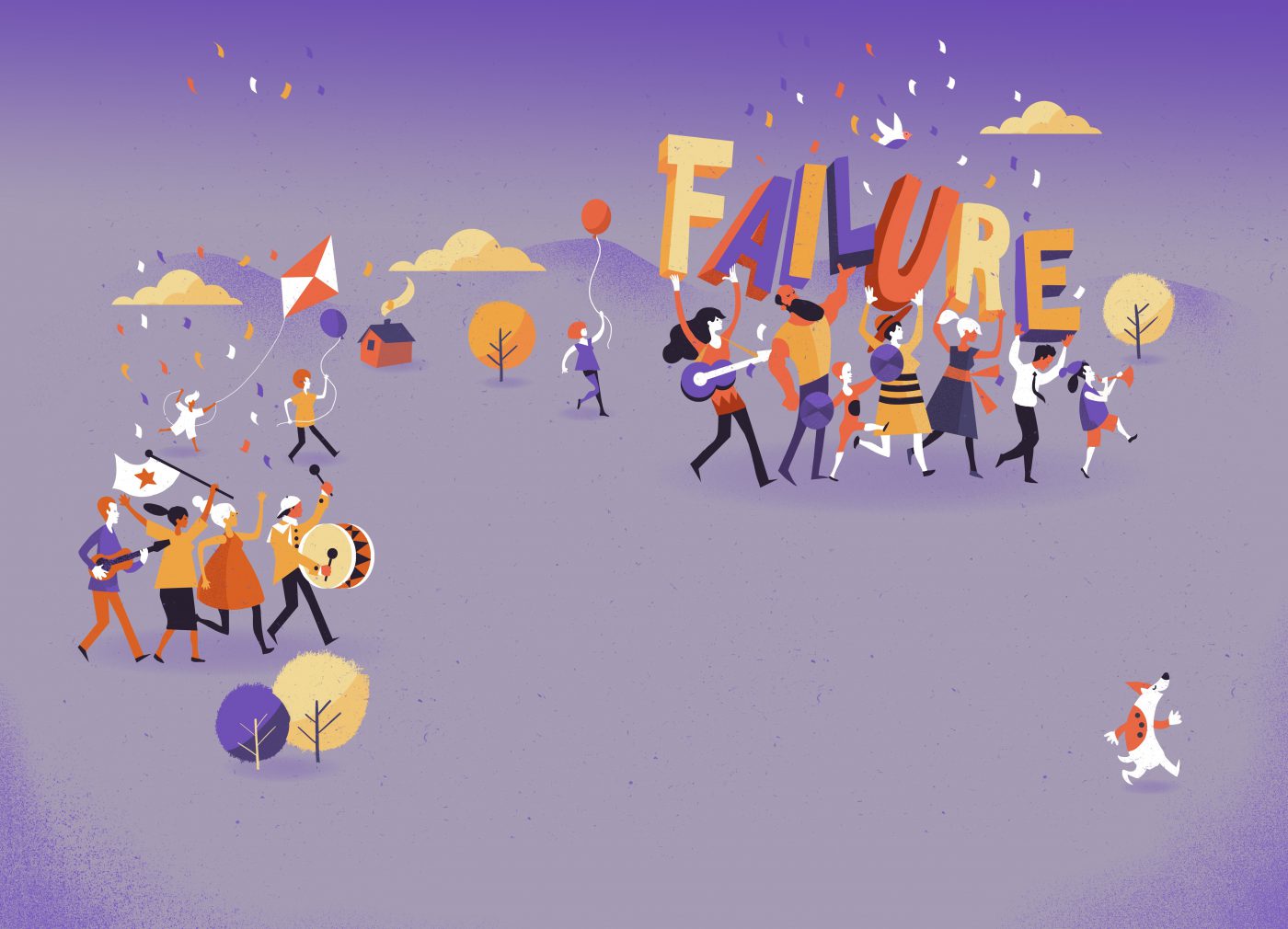The word “fail” or “failure” is perhaps too directly linked with a lack of success. By definition that’s exactly what it means, but must it lend itself to such finality? Some industry pioneers don’t necessarily think so. Leaders in creative, innovative, and inventive industries are embracing failure as an essential part of the process. However, there still remains a large contingent of fail-fearing people who stubbornly adhere to the antiquated adage, “Failure is not an option.”
The truth is that small failures have become not only an option, but often the impetus that unleashes extraordinary thinking, unconventional approaches, and more frequent success stories. The fear of failure is what boxes us in, causing us to second guess out-of-the-box ideas.
In the world of design, succumbing to this fear produces the predictable and grants us permission to recycle old ideas or “borrow” from others’ breakthroughs. This is what allows for, if not encourages rigidity and conservative approaches. To fear failure throughout the creative process is to shy away from being adventurous and creating something truly unique. And in today’s ultra-competitive, oversaturated environment that is the ultimate failure.

Speed as it relates to performance is valued now more than ever before. It’s more efficient (and effective) to keep thinking, keep moving, keep doing than to get hung up on getting it right the first (or second) go around. But it’s also important to pump the breaks and investigate the reason behind a minor failure. You may even end up realizing something you would’ve never even considered. Planning for and allowing for little failures along the way enables employees to work faster, liberating them from the time-consuming quest for perfection.
Agencies and companies alike must be conditioned to work in small iterations— assessing why an idea isn’t working and pivoting to see where the next one takes us. We must foster a safe-to-fail environment in order for a more fearless mentality to take root. We must shift the line of thinking to view little failures as opening doors, not closing them. After all, sometimes being wrong is what gets you to right.
Just think, if you were given a license to fail, wouldn’t you feel free to experiment with new methods, strategies and processes? Wouldn’t you feel empowered to explore uncharted directions? Wouldn’t the creative process be more productive, more collaborative, more explorative?
Of course failure is not a mission, a purpose or a value, but accepting it from time to time can build a culture of confidence, and achieve better results. Today, cooperation-oriented organizations aren’t looking for scapegoats or justice when something fails, but inquiring to learn from their “mistakes” and share the risk. These safe-thinking zones are the ones that implement novelty and ultimately succeed. Failing after investing tons of time and resources is what causes heads to roll.

I like to practice what I preach, which is why I’ve always encouraged our team members to try bold, new approaches and different ways of working. At cba we like to test experimental practices out as Minimum Viable Products in partnership with willing clients. When applying one on a project, we exercise full transparency as to its prototypical nature. We’ve also fully embraced the Design Sprint Methodology developed by former Google Venture design partner, Jake Knapp. He captured this novel approach in the NY Times Bestseller SPRINT (here is a brief video synopsis of the book if you’d like to know more). I, along with key team members, have been fortunate enough to be trained by Jake in facilitating Design Sprints.
The great thing about SPRINT is that after a short period of time, you’re able to test your ideas in front of consumers. Even if they don’t take to an idea, it’s still useful learning. You can either tweak the idea and try again or abandon the idea and move on. Regardless, you haven’t spent five months striving for perfection only for it to be shot down in Quant testing.
If you want to know more about how we run Design Sprint and how we have adapted to more traditional branding project to act faster in SPRINT MODE you can find more information here.
Lastly, I’d like to leave you with a personal favorite quote by the renowned football coach, Paul Beard Bryant: “When you make a mistake there are only three things you should ever do about it : admit it, learn from it and don’t repeat it.”
Jean-Marc Rinaldi is CEO and Founder CBA USA.

